South Pacific: Minerva Reefs Worth More than Just a Stopover
The Minerva Reefs are a great stopover for cruisers making the passage between New Zealand and the island nations of Tonga and Fiji. US sailors Rich and Michelle Marshall, who have been cruising the South Pacific for more than eight years, always stop there on their travels and in this report they share their information and insights about a unique and wonderful place in the hope that it provides a safer and more enjoyable experience for future visitors.
Published 1 month ago
Source: Exploring Minerva Reefs – by Rich and Michelle Marshall
An Environment Worth Exploring
Located about a third of the way between New Zealand and the island nations of Tonga and Fiji, a stopovera at the Minerva Reefs breaks up the 1000plus mile passage into more manageable segments. Since these remote reefs are visited only by yachts and military patrols, they have a healthy underwater environment worth exploring.
During May and October of each year there can be quite a few boats pausing together at the Minerva Reefs while waiting for passage weather. We have enjoyed being a part of these spontaneous, multi- national communities, complete with VHF nets, potlucks, reef walks, and collaborative analysis of weather data
The enclosed lagoons of both reefs provide some protection from open ocean conditions. Both reefs are flooded at high tide and a portion of the swell comes across into each lagoon at high tide. The North reef is somewhat higher and provides better protection – especially at its Southern end. We estimate that half the open ocean swell comes across the reef at high tide. In other words, at high tide, a four meter swell in the open ocean results in two meter waves inside the lagoon. It can be a rough anchorage.
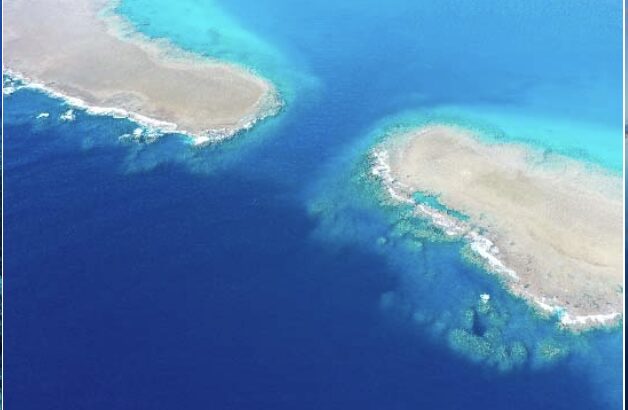

Depth is relatively uniform across the center of each lagoon and never exceeds 30 meters. Holding is good everywhere except near the entrance channels, where current seems to have swept away the sand. We have been through a 35 knot blow, gusting to 40, in the North reef along with 3 other yachts. No one dragged.
We have found the Predictwind global tide model accurately predicts the tide at Minerva Reefs. We create a custom forecast location and the tide data are then visible on the Predictwind “Forecast Tables” screen. Offline tide data are provided by the freely available WXTide32 application. The tide data for New Zealand’s Raoul Island are about 30 minutes behind the tides we observe at Minerva Reefs.
The reefs and their entrances are accurately depicted on both CM93 and Navionics chart products. Satellite imagery is only available for the North reef, and only from Google. A satellite overlay for use with OpenCPN is freely available at brucebalan.chartlocker.com. Download the Google .MBTiles file from the Tonga section of the website.
North Minerva Reef – North Reef Entrance
Having visited the North Reef many times, we would not hesitate to enter at night. The charts accurately depict the entrance channel and it is deep and wide enough for a cargo ship. Many yachts arriving for the first time will gingerly thread their way in through the pass with several lookouts posted. Later, these same yachts often raise their sails inside the lagoon and depart through the pass under full sail.
Occasionally, we have observed significant standing waves in the North Reef entrance channel. These can extend nearly a kilometer out to sea. This current-against-waves situation occurs during falling tide and is much more severe with Northerly winds. We have never observed standing waves that would threaten a yacht but they would certainly roll a dinghy. We have always found a safe route by hugging the righthand side of the channel when heading out in the dinghy.
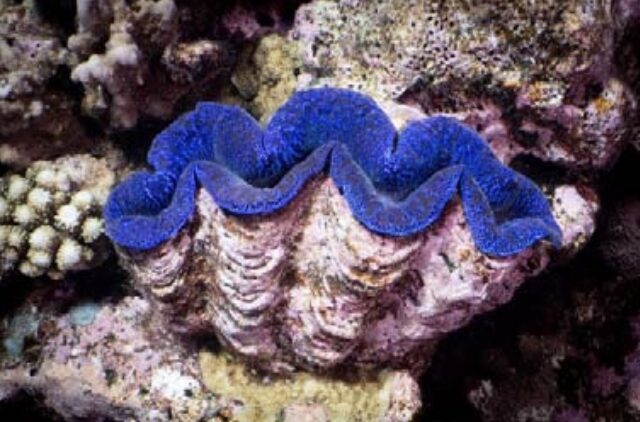

If I were a first-time visitor in a small craft, seeking refuge from severe weather at night, I would head in through the North Reef entrance and stay in the Eastern half of the lagoon where there are fewer, smaller bommies. I would head towards the windward edge of the lagoon and drop my anchor when the depth is about 10-15 meters.
North Reef Anchorages
Anchoring inside the North Reef is not challenging. There is no shortage of locations around the edge of the lagoon. Most yachts move to the windward side to reduce fetch. Since the lagoon is over two miles across, wind driven waves can be significant on the leeward side. The prevailing winds are East to Southeast and this is a happy coincidence since the East side is deeper and has fewer bommies.
We find conditions are usually best at the South end in any South or East winds. The reef is higher there. This can be observed at low tide when a long, one-meter high “waterfall” forms at the margin where the hard reef meets the lagoon. During our longer stays at North Reef when the SE trades are established, we typically sail across the lagoon every day, explore outside the reef, then sail a reach back South for the night.
South Minerva Reef – South Reef Entrance
The “figure 8” shaped Minerva South Reef has a separate East and West lagoon. Only the East lagoon is navigable.
The East lagoon has a bommie obstructing the entrance channel which is accurately located on all chart products and it is easy to spot. We would not hesitate to pass on either side of it but prefer the East channel since both sides of that channel are visible in all light conditions. The deepest and most wide- open channel is on the West side of the entrance however this channel lines up with the hazard mentioned below.
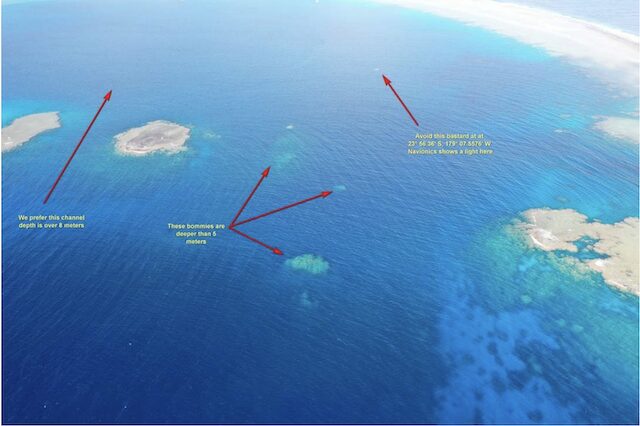

South Reef Anchorages
When conditions are calm we anchor as far West as possible for easy access to the best snorkeling. When winds are above 10 knots we stick to the windward edge.
The South Minerva reef is not as high or wide as the North Minerva reef. Therefore conditions in the lagoon are somewhat rougher at high tide. If the winds are going to be above 15 knots for several days, we’ll usually head up to the North Reef.
Compared to Minerva North, there are more large, deep bommies around the perimeter of the South Minerva lagoon. That being said, we’ve always had enough room between them to anchor but we have had to unwrap the chain after a wind shift. It is easy to spot these bommies since the water is clear and the bottom is white sand.
General Info and Opinions about Minerva Reefs
We have observed many dozens of boats stopping briefly as possible at the remote Minerva Reefs. Listening to the VHF chatter, we get a feeling that some boats feel “trapped” here and experience a lot of stress about how long they might wait for a weather window. Often, the skipper must adhere to a schedule but there’s also what we call “Minervousness”: a feeling of being stuck hundreds of miles from any assistance.
There’s certainly elevated risk exploring such a remote location. But none of us chose this lifestyle for its safety. We wish we could lead every boat on a snorkel to show them the amazingly clear water and huge, healthy reef fish. This place is more than worthy of a long layover. We feel privileged to have experienced such an unspoiled piece of the South Pacific.
If you like swimming in the tropics, please jump in the water and look around. A suitable weather window always materializes. It just might take a few weeks. In the meantime, we cruisers always assist each other.
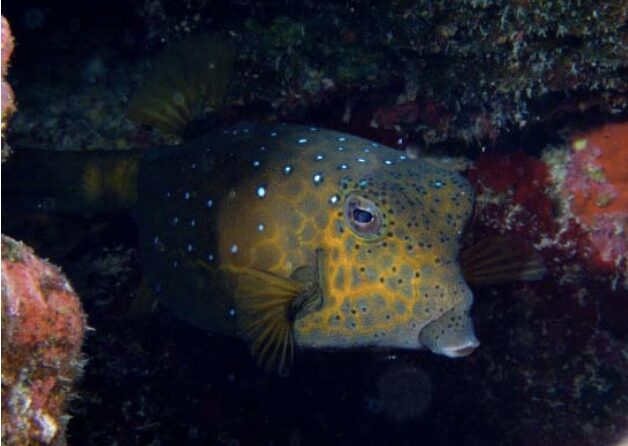

Fiji and Tonga Jurisdiction
If everything you know about Minerva Reefs came from Wikipedia, you might think a shooting war could break out any minute between Fiji and Tonga. We have encountered the Tonga Navy patrol boat several times during our visits. They conduct a very polite and professional check of our passports, ask a few questions and they tell us to “enjoy the reefs”.
We have had the Fiji Navy visit us just one time and they were also quick and courteous. However, that same Fiji Patrol did conduct thorough searches of other 3 other Fiji-bound vessels near the South Reef. It appeared they might have been operating on a tip.
Digging deeper into the 2010-2011 navigation light incidents, political tension between Tonga and Fiji was high at that point in time for reasons unrelated to the Minerva Reefs.
Rich and Michelle Marshall
SV Pogeyan
………………………………
Rich and Michelle’s comprehensive report can be downloaded from this link:
………………………………
About the Authors
Rich and Michelle Marshall have been cruising for eight years on their Leopard 47 “Pogeyan”. Their entire cruising career has been spent exploring the South Pacific. They spend cyclone season in Whangarei, New Zealand where Michelle is active in the arts community and Rich fusses with the boat.
The rest of the year they cozy up to the reefs in Fiji and the whales in Tonga. They have made the passage between New Zealand and the tropics 13 times, always stopping along the way at remote Minerva Reefs. Over the years, these stops got longer and longer as they uncovered the wonders of this unspoiled piece of paradise.
Rich and Michelle have spent more than eight months exploring Minerva reefs above and below water. They wish to share info and insights about this unique and wonderful place in the hope it provides a safer and more enjoyable experience for future visitors.
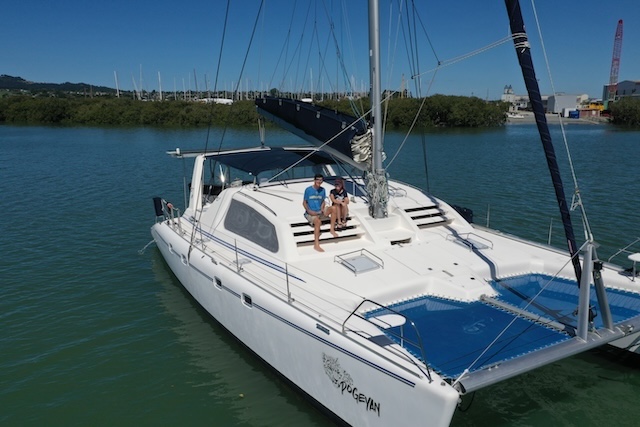

.………………………………
© 2025 Noonsite. This content was edited by Noonsite. Do not reproduce without permission. All rights reserved.
The opinions expressed in this article are the author’s own and do not reflect the view of Noonsite.com or World Cruising Club.
Find out all news, reports, links and comments posted on Noonsite, plus cruising information from around the world, by subscribing to our FREE monthly newsletter. Go to https://www.noonsite.com/newsletter/.
Related to following destinations: Fiji, New Zealand, North Island (New Zealand), Opua (Bay of Islands), Tonga, Whangarei
Related to the following Cruising Resources: Anchorages, Circumnavigation, Circumnavigation, Cruising Information, Pacific Crossing, Pacific Ocean South, Routing



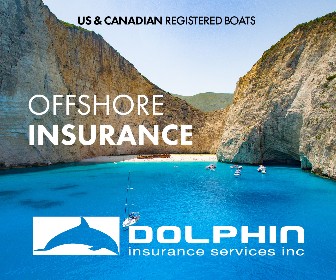

Thank you, Rich & Michelle, for sharing this great information that has taken you years to collect. You are certainly the Minerva experts.
We would like to add an important point to those using this info. Hundreds of boats pass through the Minerva Reefs each year creating pressure on this pristine ecosystem. Please, please, please do not fill your freezer with lobster. And do not spear them… catch them by hand so you can leave the females with eggs.
Parrotfish are an essential part of the healthy reef system as they keep the corals clear of algae. They are especially important after bleaching events where their cleaning efforts allow the coral to return before algae takes over. Please leave alive so others can enjoy their beauty.
Bruce & Alene
s/v Migration